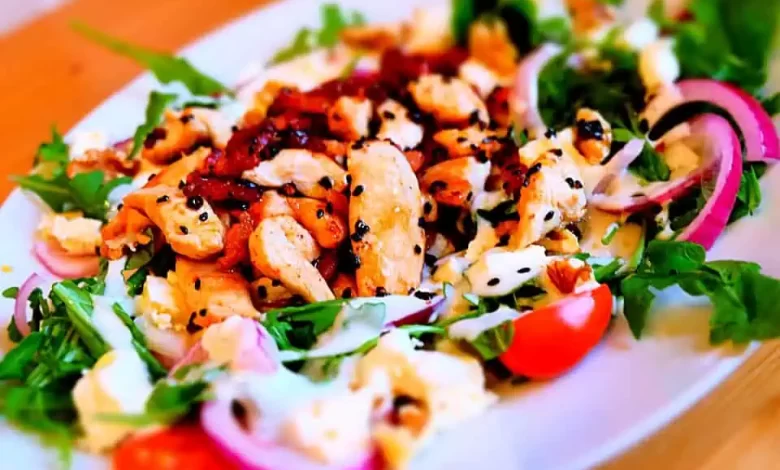
Eating the right fruits is a great way to get in your daily nutrients and vitamins, but did you know there are certain fruits you should be eating if you’re following a Low FODMAP diet?
In this blog post, we dive deep into the world of fruit to discuss what fruits are best for Low FODMAP diets so that you can make healthier choices for yourself. Get ready to learn more about which fruits can fit into your diet and how many of each one you should be having!
Fruit you can eat on low fodmap
The low-FODMAP diet is an increasingly popular system of eating that can help manage the symptoms of Irritable Bowel Syndrome (IBS). FODMAP stands for Fermentable Oligosaccharides, Disaccharides, Monosaccharides and Polyols and describes a group of short-chain carbohydrates that can trigger the symptoms of IBS when consumed in excess. The aim of a low-FODMAP diet is to limit the amount of FODMAPs you’re consuming and Instead to opt for other nutrient rich food as part of a balanced diet.
Adding fresh fruits to your diet can be a great way to boost your nutrient intake but if you’re following a low-FODMAP diet it’s not always clear which fruits are safe for you to eat. Fortunately there are plenty of delicious and nutritious fruits that you can include in your low-FODMAP menu plan so here’s an overview of some suitable options:
Citrus Fruits such as oranges, tangerines, lemons and limes as well as grapefruits are all allowed as part of the LOW-FODMAP diet with 1/2 cup serving being suitable.
Include berries like strawberries, blueberries, raspberries, and blackberries in low-FODMAP diets when consumed unprocessed in limited amounts—approximately 1/2 cup of fresh or frozen berries or 2 tablespoons of dried berries is suitable.
Melons including watermelons, rockmelon/cantaloupes are also allowed with servings no more than half a cup fresh or 2 tablespoons dried being suitable.. Bananas up to half cup serves (approx one small banana) are also permissible and they make great snacks between meals.
Finally apples, apricots and kiwi fruits in moderate servings no greater than 1/2 cup fresh or 2 tablespoons dried can round off any LOW-FODMPA meal perfectly.
Are Bananas Low FODMAP?
The Low FODMAP diet is a popular dietary protocol used to identify and eliminate certain short chain carbohydrates from the diet, known as fodmaps. For those who suffer from digestive issues, including IBS, following a low FODMAP diet may help reduce symptoms.
 Although this type of diet may seem limiting, there is still a wide variety of high-FODMAP and low-FODMAP foods that can be enjoyed. When it comes to fruit, it is important to know how much can be eaten in order to maintain a balanced diet.
Although this type of diet may seem limiting, there is still a wide variety of high-FODMAP and low-FODMAP foods that can be enjoyed. When it comes to fruit, it is important to know how much can be eaten in order to maintain a balanced diet.
When considering bananas on the low FODMAP diet there must be two considerations: ripe and unripe bananas. Ripe bananas are considered high-FODMAP due to their high concentration of oligosaccharides; thus they should not be consumed while following a low FODMAP diet.
However, unripe bananas contain lower levels of fodmaps than their unripe counterparts and are typically considered safe for those following a low FODmap lifestyle. It is generally recommended that people consume a medium sized (7-8 inch) banana or 1-3 smaller (5-6 inch) ripe banana per serving in order to maintain the low-FODMAP threshold.
Which dried fruit is low FODMAP?
Dried fruit is a great snack, full of sugar and fiber, but not every one is suitable for those following a low FODMAP diet. Dried fruits can contain high levels of FODMAPs due to the high concentrated sugar. Fructose and polyols are common triggers found in dried fruits such as dates, dried cranberries, sultanas and raisins.
Luckily, there are several options for dried fruits that you can enjoy if you’re on the low FODMAP diet. These include: banana chips, papaya cubes (which must be ripe to be low-FODMAP), prunes (or pitted dry plums) and pineapple dried fruit slices (ensure they are free of added sugars).

Additionally, many people find that small amounts of golden raisins or fresh grapes do not piece them off on the low FODMAP diet – however this should be checked with your healthcare provider or nutritionist to ensure this works for you specifically.
Whenever you try something new it’s best to start off slowly and have however much feels comfortable for your individual body – remember there isn’t a one-size-fits-all approach when it comes to a low FODMAP diet as everyone reacts differently.
With this in mind, introduction of food groups not listed should be checked with your healthcare professional prior to trialing them as part of your diet; particularly if you suffer from more severe IBS symptoms.
Can I eat Dried Apricots with IBS?
Dried apricots are one of the most nutritious and tasty snacks, but can you eat them if you’re on a low FODMAP diet? That depends on how much you eat, as dried apricots contain varying amounts of different types of FODMAPs.
FODMAPs are short-chain carbohydrates that are poorly absorbed in the digestive tract and can lead to symptoms such as bloating and abdominal pain. A low FODMAP diet aims to reduce these symptoms by reducing your intake of high-FODMAP foods, while still providing all the necessary nutrients.
 When it comes to dried apricots, the jury’s still out. While some studies suggest they’re safe to consume in small quantities, others indicate they may cause IBS symptoms if eaten in larger amounts. As with all things FODMAP, individual responses may vary significantly.
When it comes to dried apricots, the jury’s still out. While some studies suggest they’re safe to consume in small quantities, others indicate they may cause IBS symptoms if eaten in larger amounts. As with all things FODMAP, individual responses may vary significantly.
As a general guideline, it’s best to start by consuming no more than 1 tablespoons of dried apricots per day. If this doesn’t cause any issues for you, then slowly increase your intake over time until you find your personal tolerance level.
If any uncomfortable side effects occur after eating dried apricots in larger quantities, then reduce your consumption accordingly or stick with fresh fruits instead. You might also want to consider switching to unsulphured varieties if possible; sulphites are known triggers for people with IBS and can be present even in unsweetened brands of dried fruit products.
All in all, it is possible to enjoy a few pieces of dried apricot each day without triggering IBS symptoms – just make sure to pay attention to your body’s response and adjust your intake accordingly!
What are the worst foods for FODMAP?
A Low FODMAP diet is one of the most popular and effective treatments for people who experience IBS and SIBO symptoms as a result of certain foods. While the term “FODMAP” may sound complicated, it simply stands for Fermentable Oligo, Di- and Mono-saccharides, And Polyols – or, carbohydrates that create gases in your digestive tract when broken down. By avoiding high FODMAP foods that can aggravate your gut health, you can see drastic changes in the way you feel after eating.
When attempting a low FODMAP diet, there are many fruits and vegetables to look out for as some are considered high FODMAP foods. As a general rule of thumb, it’s best to opt for low FODMAP fruits such as apples and oranges as opposed to higher FODMAP fruits like cherries or apricots. Your best fruit options while on a Low FODMAP diet include strawberries, grapefruit, banana, blueberries and cantaloupe.

Low FODMAP vegetables can also be beneficial while following this dietary plan. Vegetables like sweet potatoes are considered lower FODMAP than carrots or squash so choosing those ingredients can help support your gut health efforts.
Is Broccoli Low FodMap?
Broccoli is also considered okay on a low FODMAP diet but you should be aware that different parts of the same vegetable can have differing levels of certain compounds that contribute to their over all fodmap category so be mindful when making food choices!
It’s true what they say: knowledge is power! Learning more about Low FODMAP ingredients can help ensure you make the best decisions regarding your overall gut health.
While it may take some time and research to become an expert on edible items suitable for those with chronic digestive issues such as IBS or SIBO. Familiarizing yourself with what does work—as opposed to what doesn’t—is key in feeling better without having to make any sacrifices in terms of taste or creativity!
List of high FODMAP foods to avoid
The following list contains some of the most common high FODMAP fruits to limit on a low FODMAP diet. Peaches, apricots, nectarines and plums are high FODMAP fruits and should be avoided. They contain higher levels of fructose (the type of sugar found in fruit) which can cause gastrointestinal distress in those with IBS.
Apples, both green and red, are also high FODMAP foods. Apples contain a complex carbohydrate called polyols (also known as sugar alcohols). This type of carbohydrate is often poorly digested by the body leading to digestive problems for some people with IBS.
Certain berries such as cherries, cranberries, blueberries, strawberries and raspberries are also off-limits on a low diet as they contain large concentrations of Sorbitol (another type of sugar alcohol).
Canned fruits should also be avoided due to the added sugars often used in processing. If eating canned fruit choose only those marked as “no sugar added” or “unsweetened” varieties.
While many people tolerate pineapple well, it contains relatively high amounts of fructose, which could exacerbate symptoms in those sensitive to this form of sugar. As such it is best to avoid pineapple until your symptoms improve after following the initial elimination phase.
Finally bananas may be eaten in moderation however it’s important that they are not overly ripe as this can increase their average fructan levels making them worse for your digestive system over time.
Which fruit can you take on a low FODMAP diet?
If you follow a low FODMAP diet, you may wonder which fruits you can enjoy. On one hand, many fruits are free of fermentable carbohydrates, but there are a few that aren’t. Designed to reduce symptoms of irritable bowel syndrome, the low FODMAP diet involves avoiding foods high in precisely these kinds of carbs.
Low FODMAP-friendly fruits include unripe bananas, blueberries, cantaloupe, grapefruit, honeydew melon and kiwi fruit. Most canned fruits and some frozen fruit products are also acceptable on the diet — provided the label doesn’t list added sweeteners or other nonessential ingredients like fluoride. Avoid dried fruit such as raisins and cranberries as they contain large amounts of fermentable carbohydrates.

Incorporate many other types of fresh fruit in moderation when following this diet, but keep in mind that consuming some fruits regularly or in large amounts may cause digestive distress.. These so-called ‘Fructans’-containing foods include apples, cherries, peaches and plums among other types of fruit which have higher levels of certain sugars than their lower (or no) Fructans counterparts discussed above.
If digestive issues persist when consuming these kinds of fresh fruits it might be prudent to exclude them from your meals until you’ve had a chance to evaluate your individual tolerance level based on listening to the messages your body sends out at regular intervals after eating such foods.
Final thought
Individuals should make changes gradually and monitor improvements in digestive discomfort over time, avoiding abrupt shifts into unfamiliar territory with items previously unconsumed on the Low FODMAP list. This approach ensures a more measured and controlled adjustment to the diet. Follow our site for more health related topic.




